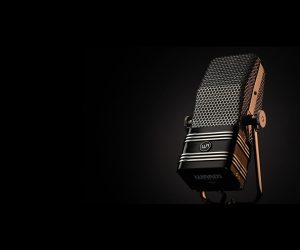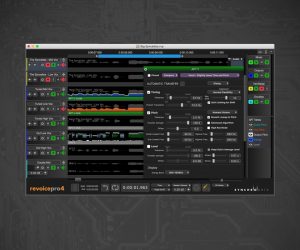
Tightening The Low End
Live sound legend, Howard Page, took time out from his touring duties to offer his thoughts on mixing with more clarity and presence.
My job title is Senior Director of Engineering at Clair Bros where I’ll often be asked to ‘rescue’ a tour that’s sonically going off the rails. More often than not it’s the sub bass that’s getting away from a FOH engineer without the skills to rein it in. When I’m not in the ‘office’, I’m out on the road with Sting, who has been touring fairly consistently, either solo or more recently with Paul Simon, for more than five years now.
In that time, I’ve been to many of the big European and American music festivals and heard hundred of mixes on every PA imaginable. The common problem I keep hearing is a lack of clarity in the high end and a bias in the low end that further clouds the mix.
The reason for the oppressive low end is various:
- Many new generation sound guys get carried away with the bass and go overboard.
- Modern line arrays ship with bass-biased factory settings.
- Low bass frequencies collect and sum from the accumulation of instruments with high output in that range.
- The low bass build up from large arenas.
I’ll address these points in turn, but I’ll start with a challenge to AudioTechnology readers: remove the safety net of overbearing low bass and mix with clarity and fidelity.
Why ‘safety net’? Let me explain.
LOW BASS SAFETY NET
You can always mix a show on a modern sound system with enough low end. That’s never the problem. In fact, low end is an area that’s easy to get away from you. If there’s too much low end in the mix it can colour everything.
So why are modern sound systems so bass heavy? Why are a lot of modern line arrays shipping with factory curves very much biased in that way, with a lot of roll off from 1k-2kHz? The reason is because they’re easy to mix on straight ‘out of the box’. You can turn up knobs and faders and it all squashes together in a vaguely presentable way — if you don’t know exactly what you’re doing, the PA is quite forgiving when it’s set up in that way. But there’s no fidelity.
Like I said, I’ll go to big festivals around the world where I’m listening to woolly, muddy mixes, and where the kick drum is routinely the loudest instrument. Then Sting comes on and it’s like a blanket has been lifted from the PA. The owner of the PA will often bale me up and ask me what I’ve done, because he’s never heard his PA sound so good. There’s no magic, it’s just that the PA is tuned incredibly accurately for incredible definition.
Make no mistake, many of the better modern sound systems are all capable of extraordinary definition and clarity, it’s just that they’re not tuned that way.
I tune a system to perform more like a huge pair of studio monitors. It sounds amazing, but it’s not for the faint-hearted. When you tune a PA in this way, there’s hair-trigger sensitivity — touch a fader and it’s right there — because the PA is so clean.
For these types of festivals I ask for direct access into the PA for the various feeds. In other words I always insist on patching directly into the system processors, bypassing their system EQ settings and start with the factory setting, which, admittedly, are mostly giving me a whole lot of bottom end and rolled off highs. So I re-pivot the sound of the PA.
MEASURING UP
You can tune your PA to be flat and high fidelity but it’s a lot harder to get that to translate in a big boomy arena. And believe me, they’re big and boomy wherever you go. The art of live sound is in achieving that tight clean sound in a large air space. It’s easy outdoors in a field but much harder in a large arena — they’re not designed primarily for amplified sound.
I’ll use Smaart to help me tune and optimise my PA. The way an FFT measurement works is it compares a reference signal to another, unknown, signal, which in my case is a measurement microphone. The reference signal I use is the mono sum of the board mix. So the art/science of tuning is to match what you’re hearing in the room with what is coming out the board as closely as possible.
It’s an ‘art’ as well as a science because it’s not as easy as drawing in a flat EQ — there’s some interpretation required. Smaart will help you get into the right ballpark, and from there you have to use your experience and your ears. For example, the Smaart readout for the Rod Laver show in Melbourne was showing that I had an 8-10dB lift in the bottom end. But I know from experience that the build up Smaart is picking up is the decay of the room making it think there’s more low bass than there actually is. If I tuned the PA to appear flat on Smaart, the show would be wimpy and have no bottom end at all. I have to let my ears be the final arbiter, that and using really well-recorded music to act as a reference.

MAN & A MIC
Using your ears and a microphone will reveal plenty; more than Smaart and a measurement mic will reveal on their own. Again, taking Rod Laver Arena as an example (but this has been true of many an arena on this tour), I’m filtering out quite of lot of energy around 100Hz.
Smaart isn’t going to show me 100Hz as a peak because I have to excite the room in that frequency band to create that peak. I do this by talking into my mic and exciting the room with those frequencies. Full-range pink noise won’t do that either. Again, if I just take Smaart as gospel, the build up at 100Hz would sneak up on me. So you need the experience to read the Smaart ‘tea leaves’.
Ask yourself: is what Smaart’s telling me on the screen what I’m hearing in the room? Mostly, the truth is somewhere in the middle.
SUMMATION TILT
The key filter on my Lake system processor is what I refer to as the Summation Tilt. It’s a shelving filter that sits where the summation frequencies of the mix are. Let me explain: if you look at a graph that illustrates the natural inherent range of all types of musical instruments, you’ll notice most of them overlap in the 100 to 500Hz range.
My philosophy is to mix ‘flat’. By which I mean, I’ll have hardly any EQ on my mix. Instead, I use high quality, well-placed microphones on stage, so I’m hearing what the instruments actually sound like. But the problem I have is that when I put all those instruments into the mix, they all have their strongest output in that 100 to 500Hz range.
Take a show like the Sting/Paul Simon tour where you can have as many as 160 inputs open. With so many inputs you need uncompromisingly high fidelity, otherwise all the instruments that operate in those low-mid frequencies will be muddied and lost. I’m thinking of instruments like the bass guitar, the conga drums and the big African drums in Paul Simon’s band. Hit those and you’ll just cop a wall of blurry bass — you wouldn’t hear the fundamental note.
So the Summation Tilt filter is my go-to EQ for the PA. Even when I have a full arena; a few songs in if I feel myself losing definition, ie. if it’s too warm in the low mids, then I’ll reach for the Summation Tilt. I can taper that summation; use the shelf to change the tilt on the sound system to get more definition, depending on what the room’s doing.
That shelf is a lifesaver. Outdoors, I don’t need it. You can push full-range, clean hi-fi, sound for days. But the moment you come indoors into these enclosed air spaces, it comes into play. How you use it determines how hi-fi and ‘in your face’ the mix is.
MASTER DELAY: NEARFIELD VOCALS
This last tuning and optimisation trick doesn’t have anything to do with LF buildup but it’s one that’s well worth sharing. Once I get all the elements sounding right in my system processor, I’ll use a master group to delay the entire sound system. Not all the way back to the drum kit or backline; a little more forward than that. You know you’ve locked onto the magic delay setting when the vocals come into focus; it’s where the vocals sound like they’re a metre in front of your face. It’s the sweetspot when the phase alignment cancels or sums just right with what’s being played on stage — it’s like the total sum of everything. At that magic point, it all sits perfectly and the vocal is right there, like you’re sitting in front of a beautiful pair of 20m-high nearfield monitors.
Usually the delay is around 6-7ms. The sound system is about six feet in front of the lip of the stage and Sting’s mic is about six feet from the lip of the stage. So you’re talking about a total of 12 feet or four metres, say. Which you’d think might equate to around 12 to 14ms delay (using the ‘1ms per foot’ rule of thumb). But don’t forget about the induced delay through the entire system, with the various conversion stages, which may add an extra 8ms. Combine the delay I’ve introduced into the PA with the system latency and you have a number that makes more sense. Regardless, once you hit the right number, the show’s right there. It’s very obvious.
TAKE THE HOWARD PAGE CHALLENGE
So I’ll conclude by reiterating my challenge: I challenge you to mix for maximum fidelity. Yes, I understand that we all have to mix for an audience, and a younger audience does expect plenty from the subs. But not to the exclusion of all else. Don’t hide your mix behind the subs. Rather, take the risk and mix with clarity in mind. I think you’ll be amazed by the positive reaction you’ll get as a result.
















RESPONSES